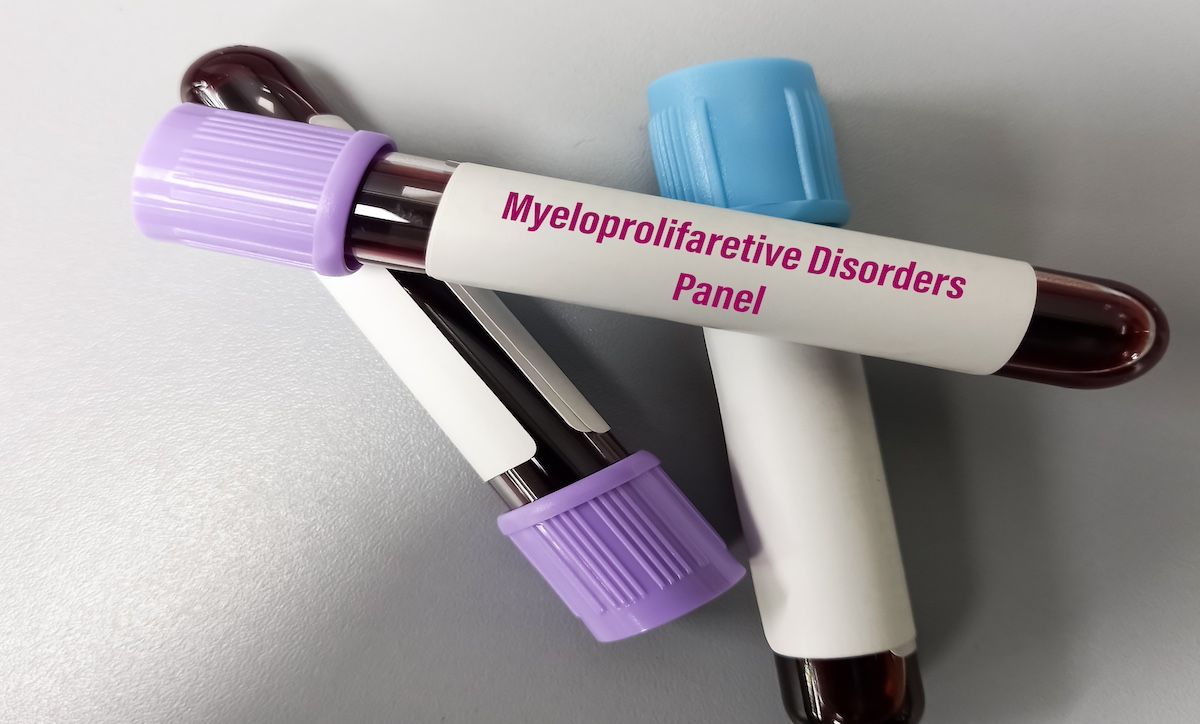- Center on Health Equity & Access
- Clinical
- Health Care Cost
- Health Care Delivery
- Insurance
- Policy
- Technology
- Value-Based Care
ZRSR2 Loss Alone Does Not Drive JAK2 V617F MPN Progression
A new analysis suggests links between ZRSR2 loss and JAK2 V617R disease progression are indirect and complex.
Mutations in ZRSR2 have been linked with disease progression in patients with JAK2 V617R–driven myeloproliferative neoplasms (MPNs), but a new report suggests that loss of ZRSR2 alone is not sufficient to drive disease progression. The findings were reported in the journal HemaSphere.1
The authors explained that JAK2 V617R is the most recurrent driver mutation in MPNs, and “results in the constitutive activation of the JAK-STAT pathway.”2 Within that patient group, some patients also have concurrent ZRSR2 mutations, the authors said. Such patients have been found to have a higher risk of disease progression and a worse prognosis. The unanswered question, they said, is why.1
“[T]he functional consequences of mutations in ZRSR2 in terms of disease progression in JAK2 V617R–driven MPNs have not been determined,” they explained.
Patients with certain types of MPNs appear to be more likely than others to have concurrent ZRSR2 mutations and JAK2 V617R–driven disease. | Image credit: MdBabul - stock.adobe.com

The authors used CRISPR-Cas9 gene editing to test out the impacts of ZRSR2 loss in both JAK2-mutated human megakaryoblastic cell lines and in a mouse model of MPN. By doing so, they hoped to better understand how ZRSR2 loss affects patients with MPNs
Previous research has indicated that ZRSR2 is involved in minor spliceosome assembly, and its loss can lead to missplicing of U12-type introns in myelodysplastic syndromes, the authors said.3
In the human cells the authors analyzed, the authors confirmed that ZRSR2 loss leads to retention of U12-type introns.1 It also leads to transcriptional changes in genes containing such introns, they said. Yet, those changes were not enough to lead to disease progression, they found.
The murine models showed that Zrsr2 loss led to “modest intron retention and minor transcriptional changes.” Again, though, the authors concluded that such changes were not enough to accelerate progression of MPNs.
The investigators noted that previous reporting has shown that a homolog of Zrsr2, called Zrsr1, may compensate somewhat for the loss of Zrsr2 in mice.4 They noted that Zrsr1 is expressed in mice but not in humans, which may be why the effects of ZRSR2 loss varied in degree between the 2 species.1
Patients with certain types of MPNs appear to be more likely than others to have concurrent ZRSR2 mutations and JAK2 V617R–driven disease. Analyzing data from a 2018 study, they found that the frequency of the mutations was about 10 times higher in patients with JAK2 V617R myelofibrosis (MF; 3.69%) compared with patients with polycythemia vera (PV; 0.28%) or essential thrombosis (ET; 0.41%; P < .0001).5 They further found that patients with the co-mutations also often had one or more additional mutations, frequently in the epigenetic regulators ASXL1 and TET2.1
“It is noteworthy that these co-occurring mutations were more commonly associated with MF rather than ET or PV, including chromatin modifiers ASXL1 and EZH2, or DNA methylation regulator TET2,” the authors wrote. “Moreover, the frequency of ASXL1, EZH2, and TET2 mutations was significantly higher in cases co-mutated with ZRSR2 compared to those without ZRSR2 mutations.”
Thus, they said, it may be that patients with JAK2 V617R MPNs and ZRSR2 mutations are more likely to have high-risk mutations in chromatin modifiers, which in turn elevate the likelihood of progression from MPN to MF.
The authors validated the earlier findings using a cohort of 18 patients with ZRSR2 mutations, and they plan to carry out functional and mechanistic studies to see whether ZRSR2 mutations predispose patients to genetic instability and how they interact with epigenetic regulators to promote disease progression.
References
1. Zhang R, Straube J, Janardhanan Y, et al. ZRSR2 loss causes aberrant splicing in JAK2V617F-driven myeloproliferative neoplasm but is not sufficient to drive disease progression. Hemasphere. 2025;9(9):e70225. doi:10.1002/hem3.70225
2. Kralovics R, Passamonti F, Buser AS, et al. A gain-of-function mutation of JAK2 in myeloproliferative disorders. N Engl J Med. 2005;352(17):1779-1790. doi:10.1056/NEJMoa051113
3. Madan V, Kanojia D, Li J, et al. Aberrant splicing of U12-type introns is the hallmark of ZRSR2 mutant myelodysplastic syndrome. Nat Commun. 2015;6:6042. doi:10.1038/ncomms7042
4. Madan V, Cao Z, Teoh WW, et al. ZRSR1 co-operates with ZRSR2 in regulating splicing of U12-type introns in murine hematopoietic cells. Haematologica. 2022;107(3):680-689. doi:10.3324/haematol.2020.260562
5. Grinfeld J, Nangalia J, Baxter EJ, et al. Classification and personalized prognosis in myeloproliferative neoplasms. N Engl J Med. 2018;379(15):1416-1430. doi:10.1056/NEJMoa1716614
Managed Care Reflections: A Q&A With A. Mark Fendrick, MD, and Michael E. Chernew, PhD
December 2nd 2025To mark the 30th anniversary of The American Journal of Managed Care (AJMC), each issue in 2025 includes a special feature: reflections from a thought leader on what has changed—and what has not—over the past 3 decades and what’s next for managed care. The December issue features a conversation with AJMC Co–Editors in Chief A. Mark Fendrick, MD, director of the Center for Value-Based Insurance Design and a professor at the University of Michigan in Ann Arbor; and Michael E. Chernew, PhD, the Leonard D. Schaeffer Professor of Health Care Policy and the director of the Healthcare Markets and Regulation Lab at Harvard Medical School in Boston, Massachusetts.
Read More
Zanubrutinib Shows Similar Efficacy but Better Safety Than VEN–I in Frontline CLL
November 26th 2025The analysis found that zanubrutinib provides similar progression-free survival to fixed-duration venetoclax plus ibrutinib but with consistently fewer serious side effects, suggesting a more favorable overall safety profile.
Read More
